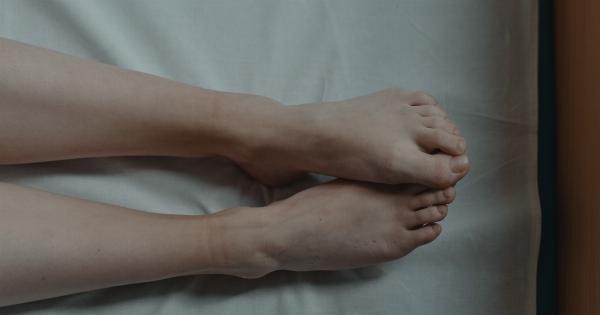Pain is an inevitable aspect of life that most individuals experience at some point. Whether it is a result of an injury, chronic condition, or simply the wear and tear of daily activities, pain can significantly diminish one’s quality of life.
While there are numerous pain relief methods available, light therapy emerges as a promising alternative that harnesses the power of light to alleviate discomfort.
The Science behind Light Therapy
Light therapy, also known as phototherapy or low-level laser therapy (LLLT), is a non-invasive treatment that uses specific wavelengths of light to penetrate the skin and stimulate various biological processes within cells.
It is based on the principle that different wavelengths of light can have diverse effects on the human body.
The light used in therapy is often produced by light-emitting diodes (LEDs) or laser devices. When exposed to specific wavelengths of light, cells within the body absorb the energy and produce a biochemical response.
This response can influence cellular function, thereby aiding the healing process and reducing pain.
Types of Light Therapy
Light therapy encompasses different modalities, each with distinct mechanisms of action and targeted applications. Here are some of the most common types of light therapy used for pain relief:.
1. Red Light Therapy
Red light therapy utilizes red or near-infrared wavelengths, typically between 630 to 880 nanometers.
This form of therapy has been shown to promote cellular regeneration, improve blood circulation, and reduce inflammation, making it effective for managing pain related to wounds, arthritis, and musculoskeletal conditions.
2. Blue Light Therapy
Blue light therapy employs wavelengths between 405 and 420 nanometers to treat various skin conditions, such as acne and psoriasis.
While its pain-relieving properties are not as prominent as red light therapy, blue light therapy has shown some potential in alleviating pain associated with certain inflammatory conditions.
3. Infrared Light Therapy
Infrared light therapy is commonly used in medical and wellness settings to soothe muscle and joint pain. It utilizes infrared wavelengths that penetrate deeper into the body, reaching tissues and promoting cellular regeneration.
Infrared therapy is often employed for the management of chronic pain conditions, such as fibromyalgia and osteoarthritis.
4. Violet Light Therapy
Although less mainstream than red or blue light therapy, violet light therapy has shown promise in pain relief.
Violet light, with wavelengths around 380 to 450 nanometers, triggers the production of nitric oxide, a biological molecule that promotes blood flow and can aid in pain management.
Benefits of Light Therapy for Pain Relief
Light therapy offers numerous benefits for alleviating pain. Some of the key advantages include:.
1. Non-Invasiveness
Light therapy is a non-invasive treatment option, meaning it does not require surgical procedures or the use of pharmaceutical drugs. This makes it an attractive alternative for individuals seeking natural pain relief methods.
2. Minimal Side Effects
Compared to many conventional pain relief methods, light therapy is associated with minimal side effects. When performed by a trained professional, it is generally considered safe and well-tolerated.
3. Versatility
Light therapy can be applied to various types of pain, making it a versatile option. Whether it is acute or chronic pain, joint discomfort, or even neuralgia, light therapy can be tailored to suit different conditions and individuals.
4. Drug-Free Approach
Unlike many traditional pain management techniques, light therapy avoids the need for pharmaceutical drugs, reducing the risk of adverse reactions or dependency.
5. Targeted Treatment
Light therapy can be precisely targeted to the affected area, allowing for focused treatment and potentially faster relief. This precision ensures that the therapy addresses the root cause of the pain rather than just temporarily masking the symptoms.
Applications of Light Therapy in Pain Management
Light therapy has shown promise in managing various pain conditions. Some common applications include:.
1. Arthritis
Arthritis is a chronic condition characterized by joint inflammation and pain. Light therapy, particularly red and infrared light therapies, can reduce inflammation, increase blood flow, and alleviate pain associated with arthritis.
2. Musculoskeletal Injuries
Whether it’s a sprained ankle or a strained muscle, musculoskeletal injuries can be quite painful and limit mobility. Light therapy can aid in tissue repair and reduce swelling, promoting faster healing and pain relief.
3. Fibromyalgia
Fibromyalgia is a disorder characterized by widespread musculoskeletal pain, fatigue, and tender points.
Light therapy targeting affected areas can help reduce pain, ease muscle stiffness, and improve overall well-being in individuals with fibromyalgia.
4. Migraines and Headaches
For those who suffer from frequent migraines or headaches, light therapy can provide relief. By targeting specific areas on the head or neck, light therapy can help reduce the intensity and frequency of migraines or headaches.
5. Wound Healing
Light therapy has been utilized for wound healing purposes for decades.
Red and infrared light therapies stimulate cell regeneration, enhance collagen production, and improve blood circulation, aiding in faster wound closure and minimizing associated pain.
Usage and Safety Considerations
While light therapy offers considerable potential for pain relief, it is essential to use it safely and correctly. Here are some usage and safety considerations:.
1. Consultation with a Professional
Prior to beginning light therapy, it is advisable to consult with a healthcare professional who can assess your condition and determine the most suitable treatment plan. They can also guide you on the frequency and duration of treatment sessions.
2. Eye Protection
Protecting the eyes from intense light exposure is crucial during light therapy sessions. The eyes should be covered with suitable eye protective wear, such as goggles or patches, to prevent any potential damage to the retina or other eye structures.
3. Equipment Quality
It is important to ensure that the light therapy equipment used is of high quality and approved for medical or therapeutic purposes. This can help prevent any adverse effects or complications that may arise from using substandard devices.
4. Skin Sensitivity
Individuals with photosensitivity or known skin conditions should exercise caution when undergoing light therapy.
It is recommended to start with lower intensity or shorter treatment durations to assess individual tolerance and minimize the risk of adverse reactions.
5. Consistency and Patience
Light therapy may require consistent and regular sessions to achieve optimal pain relief. It is important to follow the treatment plan and be patient, as results may vary depending on the individual and the specific condition being addressed.
Conclusion
Light therapy is an innovative and promising approach to pain management. By harnessing the power of specific wavelengths of light, it can stimulate cellular processes, reduce inflammation, and promote healing.
With its non-invasive nature, minimal side effects, and versatile applications, light therapy offers an exciting avenue for individuals seeking effective pain relief without relying solely on pharmaceutical drugs. As research in this field continues to advance, light therapy may become an increasingly vital component of comprehensive pain management strategies.






























